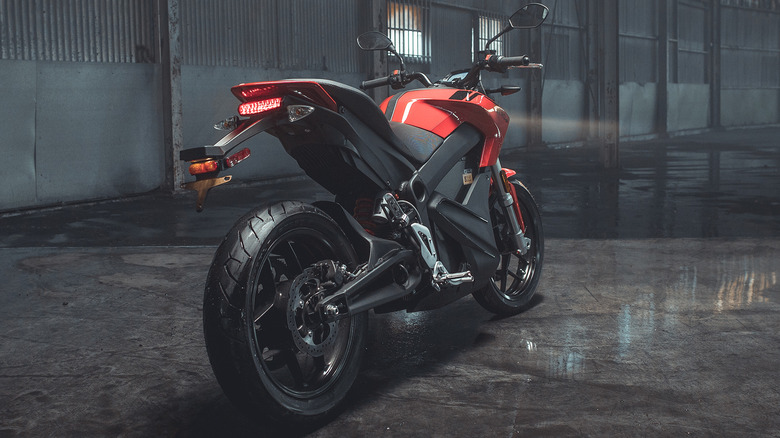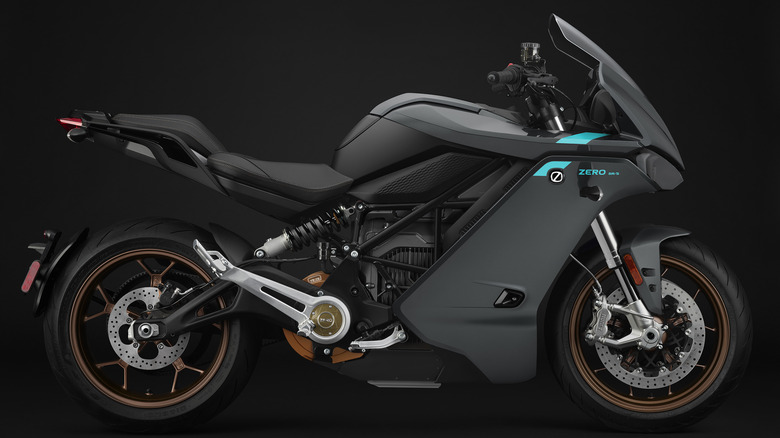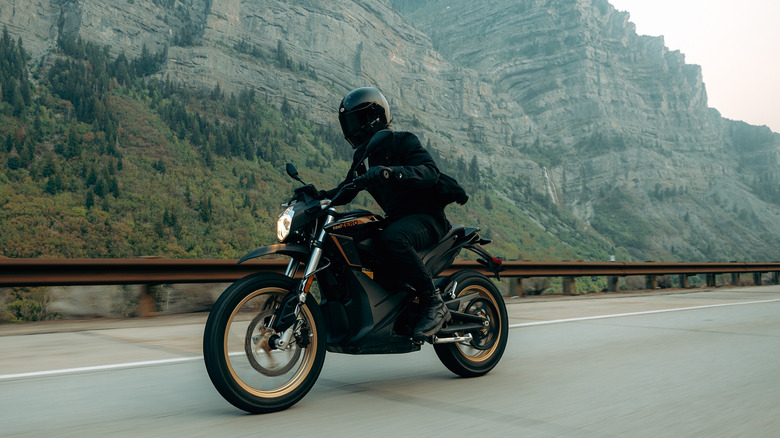Everything You Should Know About Zero Motorcycles
It's said that more than half of all new cars sold by the year 2030 will be electric-powered. Nearly every day, we're bombarded with news of the latest EV models, technology advances, and tax incentives. By comparison, the electric motorcycle hasn't been as well received by gearheads, which is a shame because it's quite a fitting platform for electric propulsion.
At the forefront of the EV bike movement is California-based Zero Motorcycles, appropriately named for its products' nonexistent level of harmful emissions. Founded in 2006 by Neal Saiki, a former NASA engineer, Zero Motorcycles is considered by some to be the two-wheel version of Tesla. At the time of writing, the company offers nine models ranging from slick street racers to off-road-ready dirt bikes. The common thread between all of Zero's bikes is the Z-Force powertrain that contains only one moving part — a maintenance-free sealed motor — which produces instantaneous gobs of torque that puts many gasoline-powered bikes to shame.
Like numerous bike builders before, Zero took to motorsports to prove the mettle of its creations. First up was the 2012 Bonneville Shootout, a land-speed event at the famed Bonneville Salt Flats in Utah. Rider Brandon Miller piloted a Zero S ZF6 to a new record for modified production motorcycles: 101.652 mph in the flying mile, smashing the old record by a full 23 mph. Following up on that success, Zero won the production electric motorcycle class three years in a row between 2013 and 2015 at the Pikes Peak International Hill Climb, a winding 12.4-mile trek up a Colorado mountainside.
More suited for city commuting
Zero's flagship sport bike, the SR/S, boasts 110 horsepower, 140 lb-ft of torque, and a range of 187 miles in the city. Unfortunately, that range drops to just 93 miles at a continuous highway speed of 70 mph. Like its four-wheel counterparts, the SR/S is spendier than a comparable ICE sport bike, with a starting price of $23,995. Zero says that the bike takes about 2 hours to recharge to 95% on a Level 2 charger. That charging time can be cut to only 1 hour by purchasing an accessory charging module from Zero that supplements the standard equipment charger. The supplementary charger, called a "charge tank," replaces a storage bin where the fuel tank would normally be located on an ICE bike and costs $2,800.
In the interest of being fair, let's also take a look at Zero's least expensive street bike, the S. With 48 horsepower and 78 lb-ft of torque, the S has an estimated range of 89 miles around town and just 45 miles riding on the highway at 70 mph. That's a bummer, but since the bike is naked, which means it doesn't have a fairing to deflect wind, riders probably won't be too tempted to take long highway trips anyway. Charge time is approximately 5 hours standard or just over 1 hour with the aforementioned charge tank accessory. Pricing for the S starts at $12,995.
Zero also markets several dual-sport motorcycles, which are primarily intended for off-road riding, but have minimal safety features to also meet street legal requirements, such as lights, mirrors, and turn signals. Pricing for the dirtbikes mimics the street bikes, starting at $12,995 and ranging up to $24,495 for the top-of-the-line DSR/X.
Zero is a pioneer, for better or worse
Like any pioneer in a market segment, Zero has experienced some challenges such as sketchy reliability and numerous product recalls. However, buyers can take comfort in a two-year comprehensive warranty and a full five-year warranty on the lithium-ion battery packs.
Motorcyclists converting from internal combustion engine (ICE) powered bikes will experience a bit of a learning curve because Zero's electric bikes don't have a clutch or gearbox of any sort. Although manual transmissions are fast disappearing from automobiles, they're still an expected norm in the motorcycle world. Riders have also commented that Zeros' heavy battery packs require an increased effort to deftly maneuver the bikes through corners.
Several legacy brands such as BMW and Harley-Davidson have recently jumped on the EV bandwagon, but Zero definitely enjoys a first-mover advantage, just like its automotive cousin Tesla. As of September 2022, more than 20,000 Zero motorcycles have been sold, covering 165,000,000 miles, both on and off road. If you're interested in seeing one in person or maybe taking a test ride, Zero has 101 dealerships in 39 U.S. states, plus another 200 dealerships spread out among 29 countries worldwide. There's also an app called the Cypher Store, which allows Zero riders to pay to unlock features like more range, faster charging, and a unique parking mode that creeps the bike forward or backward at ultra-low speed.


